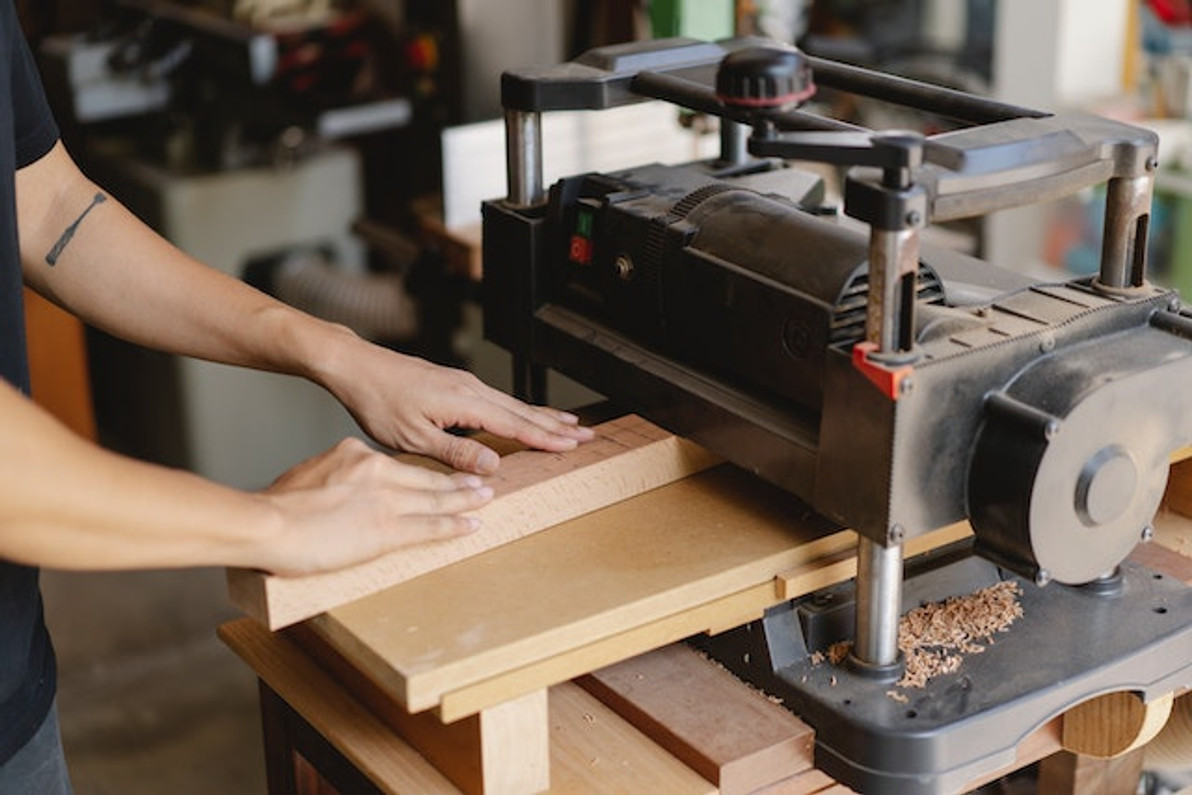4 Safety Tips to Follow When Using a Planer
Planers make it easy to create wooden boards, beams and workpieces in a uniform shape and thickness. As you may know, a planer is a tool that's designed to remove material from the surface of a workpiece. They work by shaving down workpieces. If a wooden workpiece is too big, you can shave it down by using a planer. To protect against bodily injury, however, you should follow these four safety tips when using a planer.
#1) Go With the Grain
You should go with the grain when using a planer. Wooden workpieces have a grain, which typically points in a specific direction. When using a planer, you should go with the grain rather than against it. Planing against the grain will result in increased resistance. You may struggle to shave down the wooden surface if you plane against the grain. More importantly, the increased resistance can lead to erratic and unpredictable movements with the planer tool.
#2) Wear Hearing Protection
Always wear hearing protection when using a planer. According to the U.S. Centers for Disease Control and Prevention (CDC), about 12% of all U.S. workers suffer from hearing difficulty. Many instances of hearing difficulty are caused by exposure to loud noise. Planers, of course, are loud. With hearing protection, you can suppress this noise so that it doesn't cause or contribute to hearing difficulty.
#3) Inspect for Knots Beforehand
Before using a planer, inspect the wooden workpiece for knots. Wooden workpieces may have knots in them. A knot is a section of wood that's tangled together in a hard lump-like formation. If you discover any knots in a wooden workpiece, you should avoid planing it. Instead, choose a different wooden workpiece that's free of knots. Attempting to plane a wooden workpiece with knots may result in bodily injury. Planing devices can't easily shave down knotted areas, so they may "kick back" when exposed to a knot.
#4) Set Thickness
Another safety tip to follow when using a planer is to set the thickness. All planers are designed to shave down wooden workpieces. The depth at which they shave down wooden workpieces, though, is dependent upon the thickness setting. You can adjust the thickness setting on a planer to specify how much material it should remove from the wooden workpiece. When starting out, for example, you may want to remove 1/8 inch of material. If that's not enough, you can increase the thickness setting.
Recent Posts
-
Fire Safety in the Workplace: What You Need to Know
What steps are you taking to prevent fires in your workplace? According to the U.S. Occupational Saf …Aug 23rd 2023 -
Is It Safe to Go Jogging With a Cold Infection?
If you're suffering from a cold infection, you might be wondering whether it's safe to go jogging. T …Aug 22nd 2023 -
5 Safety Tips to Follow When Using a Powder-Actuated Tool
Powder-actuated tools are commonly used to join materials to steel and concrete. Also known as Hilti …Aug 20th 2023




